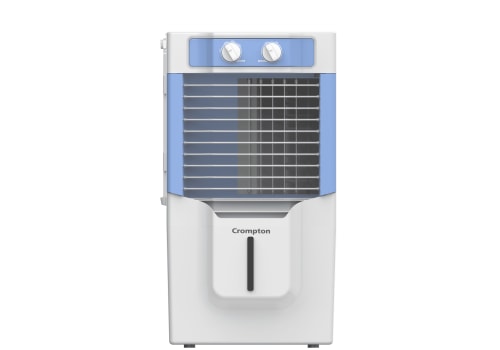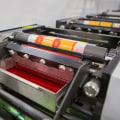Spot color printing is a versatile and cost-effective way to give your promotional products an eye-catching look. From brochures and leaflets to t-shirts and mugs, spot color printing can add a unique layer of impact to your products. In this comprehensive guide, we'll be exploring the basics of spot color printing, the different types of inks available, the costs associated with it, and tips on how to get the most out of this technique. We'll also be looking at how it compares to other printing techniques like digital printing, screen printing, and offset printing.
So, if you're looking for a quick primer on spot color printing, this guide is for you.
What is Spot Color Printing?
Spot color printing is an age-old printing technique used to add vibrancy and clarity to promotional products. It’s a type of “flat” printing that uses a limited number of inks, usually no more than four, to produce a specific color palette. This technique allows for better color accuracy and consistency when compared to other printing methods, such as four-color process printing. The spot color printing process involves the use of a specific ink or combination of inks to create an image on a substrate.How Much Does Spot Color Printing Cost?
Spot color printing costs vary depending on a variety of factors, including the type of ink used, the size of the substrate, and the complexity of the design.Generally speaking, spot color printing tends to be more cost-effective than four-color process printing. However, it’s important to note that spot color printing requires more setup time and extra plates for each additional color, which can add up quickly.
Benefits of Spot Color Printing
Spot color printing offers many benefits for businesses looking to promote their products or services. The most obvious benefit is that it offers greater accuracy and consistency in color reproduction than other printing methods. It also allows for greater control over the look and feel of the final product.Additionally, spot color printing is often faster and more cost-effective than four-color process printing.
Types of Inks Used in Spot Color Printing
The type of ink used in spot color printing depends on the substrate being printed on. For example, solvent-based inks are often used for outdoor signage, while water-based inks are often used for paper products. Additionally, some specialty substrates may require the use of UV-curable or metallic inks.Tips for Choosing the Right Spot Color Printing Process
When choosing a spot color printing process, it’s important to consider the size and complexity of the project, as well as the desired turnaround time and budget. Additionally, it’s important to consider the type of ink that will be used to ensure that it meets the customer’s needs.Finally, it’s important to work with a reputable printer who has experience with spot color printing.
Common Applications for Spot Color Printing
Spot color printing is used for a wide variety of applications, including business cards, brochures, posters, flyers, labels, packaging, signage, and more. It’s also commonly used for promotional items such as t-shirts and mugs.How to Get Started with Spot Color Printing
To get started with spot color printing, it’s important to choose a reputable printer who has experience with this technique. Additionally, it’s important to have an understanding of the types of inks that are available and which ones will best meet your needs. Finally, it’s important to have an understanding of the cost associated with spot color printing so you can plan your budget accordingly.Benefits of Spot Color Printing
Spot color printing is an ideal choice for printing promotional products, as it offers increased accuracy and clarity when compared to other printing techniques.Spot color printing uses a separate ink for each color that is printed, which makes it easier to achieve exact colors. This means that any branding or messaging printed on promotional products will look more vibrant and professional when created with spot color printing. Additionally, spot color printing has a longer lifespan than other printing techniques. This is because the inks used are generally more durable and resistant to fading and wear over time.
This makes spot color printing a great option for long-term use, as promotional products with spot color printing will remain vibrant and eye-catching for much longer than with other printing techniques. Overall, spot color printing is an excellent choice for promotional products due to its accuracy, clarity, and durability. By opting for spot color printing, you can ensure that your branding looks professional and stands the test of time.
What is Spot Color Printing?
Spot color printing is a type of printing technique used to create vibrant, eye-catching prints that use a single or limited palette of colors. Unlike 4-color process printing, which uses four basic colors (cyan, magenta, yellow, and black) to create a range of hues and shades, spot color printing utilizes specific premixed inks in order to accurately reproduce a set of predetermined colors. Each spot color ink is mixed with exact proportions of pigments and binders to create a specific color.This means that the colors produced by spot color printing are consistent and predictable, which makes it ideal for projects with brand-specific colors. Additionally, spot color printing can achieve higher levels of vibrancy compared to 4-color process printing. Spot color printing is often used for promotional items, such as business cards, postcards, flyers, and brochures. The cost of spot color printing can vary based on the number of colors used and the type of inks used.
However, it is generally more affordable than 4-color process printing.
Common Applications for Spot Color Printing
Spot color printing is an ideal choice for a variety of applications, from signage to retail packaging and more. The technique is especially useful when creating promotional materials that need to stand out from the competition. Here are some of the most common applications for spot color printing.Signage
Signs and other promotional materials made with spot color printing stand out with their vibrant colors and crisp details. The process also ensures that the colors will remain true and won't fade or dull over time, making it an excellent choice for long-term outdoor advertising.Spot color printing is also a great option for creating eye-catching window displays.
Retail Packaging
Spot color printing is also often used in the retail industry, as it can be used to create eye-catching packaging for products. Spot color printing allows brands to print logos, product information, and other important details in vibrant colors that will make them stand out on store shelves. The technique also ensures that the colors will remain true and won't fade or become dull over time.Promotional Materials
Spot color printing is also an excellent choice for creating promotional materials such as flyers, posters, and banners. The vibrant colors and crisp details ensure that the materials will make an impact on potential customers.Spot color printing also ensures that the colors will remain true and won't become dull or faded over time.
Tips for Choosing the Right Spot Color Printing Process
When selecting a spot color printing process for a promotional product, it is important to consider several factors. Knowing the substrate, number of colors needed, and other details can help you make an informed decision that will ensure the best results for your project. The substrate, or material being printed on, is an important factor to consider when choosing a spot color printing process. Different substrates, such as paper, plastic, and fabric, require different inks and printing processes to produce the best results.The number of colors used in a spot color printing project is also important. This is because the amount of time and cost involved increases with each additional color used. If you are unsure about the number of colors needed for your project, it is best to consult a professional printer who can provide advice on the best approach. It is also important to choose the right printing method for your project. Different methods such as digital printing, screen printing, and offset printing each have their own advantages and disadvantages.
Knowing what type of printing is best for your project will help you achieve the best possible results. Finally, it is important to choose a quality printer who has experience with spot color printing processes. Quality printers will have access to the latest technologies and inks, and will be able to provide advice on the best approach for your project.
How to Get Started with Spot Color Printing
Spot color printing is a popular printing technique used to add vibrancy and clarity to promotional products.To get started with spot color printing, there are several steps that need to be taken. This guide will cover the basics of setting up a spot color printing project, such as creating artwork and choosing a printer. Before beginning a spot color printing project, it's important to create artwork that accurately reflects the desired outcome. Creating artwork for spot color printing is a bit different than creating artwork for other printing techniques, as it requires a specific type of color separation. This separation ensures that the colors in the final product are crisp and vibrant.
It's best to consult with a professional printing company to make sure your artwork is optimized for spot color printing. Once the artwork is created, the next step is to choose a printer. When choosing a printer, it's important to consider their experience with spot color printing, as well as their pricing and turnaround time. A reputable printer will be able to provide you with samples of their work so you can make an informed decision. Finally, once you have chosen a printer, it's time to send your artwork and get the project started. It's important to communicate your expectations and desired outcome with the printer, as well as any deadlines or budget restrictions.
With the right preparation and communication, spot color printing can be an effective way to create vibrant promotional products.
How Much Does Spot Color Printing Cost?
Spot color printing is a great way to add vibrance and clarity to your promotional products, but one of the most important factors to consider is the cost. The cost of spot color printing largely depends on the number of colors used in the design, as well as the type of ink chosen.Number of Colors
The number of colors used in a spot color print job will directly affect the cost. Generally speaking, more colors will result in higher costs, as each color will need to be printed separately.If you are looking to save money, it is best to use fewer colors in your design.
Type of Ink
The type of ink used in spot color printing can also have an impact on the overall cost. Different types of inks may require different printing techniques, which can affect the total cost. For example, some inks may require additional time to dry before they can be printed on again, which may increase the overall cost of production.Additionally, certain inks may be more expensive than others.
Additional Costs
Apart from the cost of the ink and printing processes, there may be additional costs associated with spot color printing that should be taken into account when considering your budget. These costs could include any necessary pre-press setup and proofing services, as well as the costs of plates or other materials needed for production.Types of Inks Used in Spot Color Printing
Spot color printing is a popular printing technique used to add vibrancy and clarity to promotional products. The inks used for spot color printing vary according to the type of material being printed and the desired outcome.Two of the most commonly used inks are solvent-based inks and water-based inks.
Solvent-Based Inks
Solvent-based inks are composed of a pigment suspended in a volatile petroleum-based solvent. These inks are generally used for printing on non-porous surfaces, such as plastic, vinyl, or metal. The ink is pressed into the surface and then dried through evaporation of the solvent.Solvent-based inks offer superior opacity, resistance to abrasion, and good adhesion on non-porous surfaces.
Water-Based Inks
Water-based inks are composed of a pigment suspended in water. These inks are generally used for printing on porous surfaces, such as paper or fabric. The ink is absorbed into the surface and then dried through evaporation of the water. Water-based inks offer good coverage and vibrancy on porous surfaces. In conclusion, spot color printing is a great choice for promotional products due to its accuracy and vibrancy.With a variety of inks available and a range of costs, this printing technique is sure to meet any budget or project requirement. Additionally, it is easy to get started with spot color printing by selecting a printer and creating artwork. Spot color printing offers many benefits including accuracy, vibrancy, cost-effectiveness, and ease of use, making it the perfect choice for any promotional product. By understanding the basics of spot color printing, researching different types of inks, and choosing the right printing process, you can ensure that your promotional products look their best. With the help of a professional printer, you can create promotional products that will help your business stand out from the competition.











